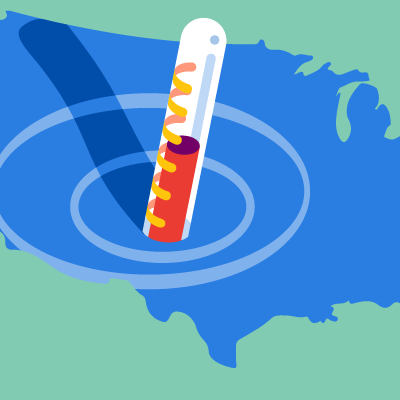The primary determinants of a structure's flood vulnerability are its location, occupancy, construction, height, and age (which determines the building regulations its construction was subject to).
But other characteristics can also significantly affect a building's resistance to flood damage and have a major impact on modeled losses. These so-called "secondary" characteristics should be accounted for when seeking to understand and manage flood risk. Here are the secondary characteristics supported by the AIR Inland Flood Model for the United States.
Type of foundation: Basement scan fill, and cripple walls can buckle. The materials used can also make a difference, with concrete generally being more flood-resistant than masonry. AIR's model supports 11 different foundation types, in addition to "Unknown."
Number of Basement Levels: Underground garages and basements are particularly vulnerable and can be flooded even if the ground floor is not. For residential accommodation one basement level is the norm, but multiple basement levels are often found in high-rise and other large commercial buildings or apartment complexes.
Basement Finish: Finished basements may be equipped with features such as drywall, plaster, insulation, and flooring, and usually contain more valuable contents than unfinished basements.
Custom Elevation: The elevation of a property above the normal level of nearby water bodies can significantly impact vulnerability, particularly in low-lying areas along waterways.
Base Flood Elevation (BFE): FEMA defines BFE as the "water surface elevation corresponding to a flood having a 1% probability of being equaled or exceeded in a given year." This is essentially the water elevation expected for a 100-year flood. A first floor built above the BFE will, therefore, significantly reduce flood damage and loss.

First Floor Height: For all residential,commercial, and small industrial buildings a first floor raised above the ground surface greatly reduces vulnerability to flood damage.
Custom Flood Protection: Assuming that they do not fail and are not overtopped, levees, flood walls, or other custom flood defense systems can protect a property.
Service Equipment Protection: Mechanical,electrical, or plumbing service equipment in residential,commercial, or small industrial buildings is often located at or below ground level. Protection can be provided by elevating the equipment, or installing some type of flood-proofing.
Floor of Interest: Sometimes a policy covers only a portion of a building. The elevation of the floor in question plays a critical role in risk assessment.
Contents Vulnerability: The contribution of building contents to the total damage depends on the flood depth, as different contents have different vulnerabilities depending on the inundation depth; the floor on which the contents are located;and the extent to which the contents are water-resistant or protected.
The inclusion of secondary risk characteristics when using complex high-resolution flood models to manage flood risk will produce much more accurate results. The AIR Inland Flood Model for the United States supports all 10 of the secondary risk characteristics listed above.
To derive maximum benefit from the models, relevant, property-specific data should be collected now as part of an insurer's routine data capture process.



